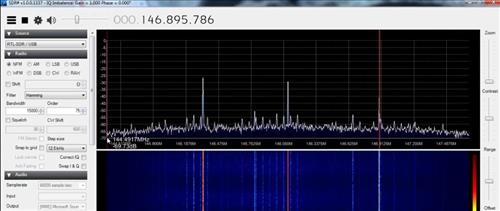
Software Defined Radio is one of those projects I have been wanting to play with since first hearing about it a few years ago.
For those that don’t know software defined radio (SDR) is a way to pick up signals broadcast though the air and display them on a personal computer.
The signal can be anything from displaying weather satellite data to picking up radio stations.
One of the things that I find interesting is displaying communications that are broadcast over-the-air, such as Pocsag/Flex.
Pocsag/Flex is the way pagers talked to each other way back in the day and is still used by doctors, firefighters, and other professions.
Years ago when I was much younger the way to get into these signals was to modify a radio scanner to pick up blocked frequencies, tap into the data discriminator chip, feed the wave through a a Schmitt trigger to get high and low binary and feed it into a serial port.
Needless to say it was a lot of work, although the results were a lot fun.
Software defined radio takes most the work out of a setup and gets straight to the fun part.
SDR does things that a few years back would have cost thousands in setup cost, SDR dongles can now be bought for less than $20, and the software is free to download.
The start of SDR was in 2012 when hardware hacker Eric Fry, Antti Palsaari and the Osmocom Team found that DVB-T TV dongles with the RTL2832U chipset could be setup with the right software to pick up signals in wide-band.
The performance of cheap SDR dongles don’t match the quality of the traditional expensive models but can take a radio hobbyist to another level of learning on the cheap.
SDR dongles continue to evolve into better and better equipment and the software to take advantage of them also continues to only get better.
In this series I am going to explore software defined radio and see what is possible.
Currently, there are many projects dedicated to SDR some that jump at me are.
1. Receive weather alerts
2. Liston to Amateur radio (shortwave radio)
3. Display Posag/flex data
4. Receive satellite data
5. Track aircraft via Mode S transmissions
6. Set up a DRM transmitter
7. Build a GSM network
8. Experiment with LTE
9. Learn how Global Navigation Satellite Systems work
10. Liston for signals sending data and try to decode them.
The list of what can be done really is endless and so who knows were I will wind up. The first thing to do is order a cheap RTL-SDR dongle and get some basic software up and running.